Redemption Through the Ranji Trophy: Indian Cricket Stars Turn to Domestic Cricket to Revive Form

The recent dip in the Indian cricket team’s performance has driven both seasoned players and emerging talents to turn to domestic cricket, particularly the Ranji Trophy, to regain form and confidence. This decision highlights the critical role of India’s domestic competitions in fostering talent and the players’ resolve to enhance their skills and restore their dominance on the international stage. Key Players Returning to the Ranji Trophy Rohit Sharma: As the captain and a cornerstone of India’s batting lineup, Rohit Sharma has faced criticism for inconsistent performances against high-caliber bowling attacks. His participation in the Ranji Trophy is aimed at refining his game, particularly in terms of shot selection and mental resilience in varying conditions. By taking this step, Rohit also sets an example for younger players, emphasizing the value of domestic cricket as a platform for skill development and form maintenance. Yashasvi Jaiswal: A budding talent in Indian cricket, Yashasvi Jaiswal has shown flashes of brilliance at the international level but has struggled to convert promising starts into significant innings. Returning to the Ranji Trophy provides him with an opportunity to rebuild his confidence and address technical shortcomings. With his aptitude for the longer format, Jaiswal is well-placed to make a strong impact in domestic cricket and use it as a springboard for consistent performances at the international level. Shubman Gill: Once considered one of India’s brightest prospects, Shubman Gill has encountered a troubling loss of form, leading to his omission from crucial matches, such as the Boxing Day Test in Australia. His return to the Ranji Trophy allows him to spend crucial time at the crease, helping him regain his rhythm and rediscover the confidence that initially set him apart as a future star of Indian cricket. Rishabh Pant: Known for his flamboyant batting and match-winning abilities, Rishabh Pant has struggled with injuries and erratic performances in recent times. The Ranji Trophy serves as a critical platform for Pant, not just to rediscover his batting form but also to sharpen his wicket-keeping skills in demanding domestic conditions. A successful campaign could help Pant reestablish himself as a key player for the national team. Virat Kohli: Widely regarded as one of the greatest cricketers of the modern era, Virat Kohli has experienced fluctuating form in recent matches. While he has delivered sporadic impact performances, his consistency has been questioned. Kohli’s decision to play in the Ranji Trophy demonstrates his unwavering commitment to excellence. It provides him with an opportunity to refine his technique and rediscover the form that has earned him global acclaim. Why the Ranji Trophy is Vital The Ranji Trophy has long been a cornerstone of Indian cricket, offering players a chance to hone their skills in diverse conditions and against quality opposition. The return of key players to the tournament highlights its significance as a development platform. Technical Refinement: Domestic cricket allows players to address technical flaws in a less pressurized environment than international matches. Mental Rejuvenation: Competing in familiar conditions against domestic rivals helps rebuild confidence and focus. Inspiration for Young Players: The participation of senior players elevates the standard of competition and motivates younger talents, creating a robust talent pipeline. Implications for Upcoming International Fixtures With major assignments such as the World Test Championship and bilateral series on the horizon, the form and readiness of India’s core players are crucial. By prioritizing domestic cricket, these players aim to tackle vulnerabilities and ensure the team is well-prepared to face international challenges.This decision not only showcases the players’ commitment to improvement but also reinforces the enduring importance of the Ranji Trophy in the Indian cricketing ecosystem. Strong performances in domestic cricket could serve as the catalyst for India to reclaim its status as a dominant force in the global cricketing arena.
Recent Test Series Struggles: Examining India’s Setbacks
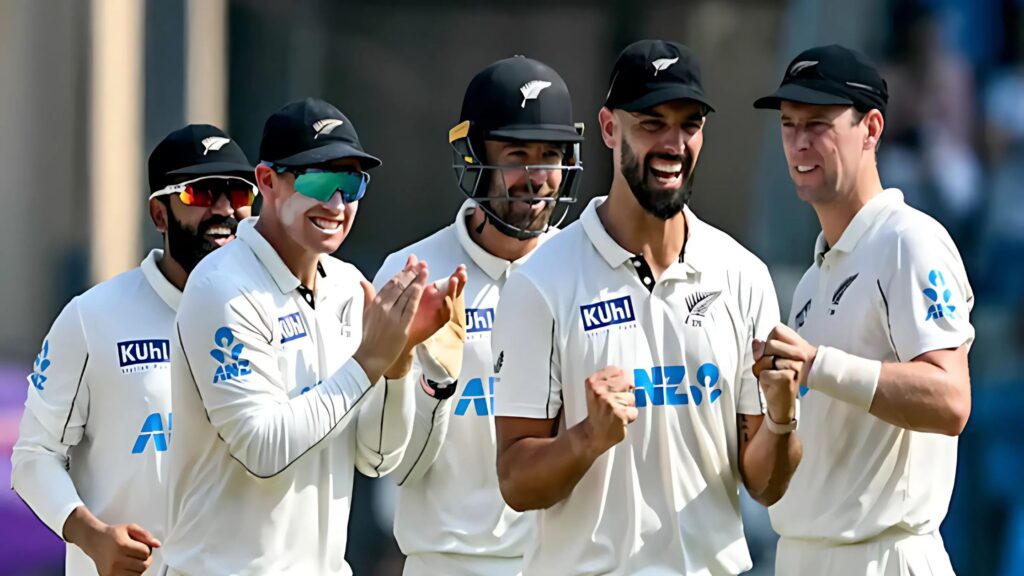
Once celebrated as a dominant force in Test cricket, the Indian cricket team has encountered major challenges in recent times. Two significant setbacks—a 3-0 series whitewash by New Zealand on home soil and a 3-1 defeat in the Border-Gavaskar Trophy in Australia—have tarnished their reputation. These disappointing performances also meant India failed to qualify for their third consecutive World Test Championship (WTC) final. New Zealand Series: A Rare Home Defeat India’s unmatched record in home conditions took a severe blow with a 3-0 loss to New Zealand. This marked one of the lowest points in Indian cricket history in recent years.following are the key issues: Batting Struggles: Indian batters faltered against New Zealand’s disciplined bowling lineup.The middle order, traditionally a backbone of India’s success, failed to capitalize on starts.Star players like Virat Kohli and Rohit Sharma came under scrutiny for failing to deliver in crucial moments. Ineffective Bowling: Even on spin-friendly pitches, Indian bowlers failed to dominate.Kane Williamson and other New Zealand batsmen exhibited exceptional patience and technique. Fielding Lapses: Dropped catches and missed run-outs were critical errors.These lapses allowed New Zealand to seize control of critical phases. Impact The clean sweep at home exposed vulnerabilities in India’s adaptability and ability to handle pressure, raising questions about team preparation and execution. Border-Gavaskar Trophy: Disappointment in Australia The Border-Gavaskar Trophy, a highly competitive series between India and Australia, ended in a 3-1 defeat for India. The loss was particularly disheartening given India’s previous successes on Australian soil following are the key moments: First Test (Loss): Australia’s pace trio, led by Pat Cummins, decimated India’s batting order. Failure to post substantial first-innings totals set India on the back foot. Second Test (Win): India displayed resilience with a strong performance, buoyed by younger players like Shubman Gill and Rishabh Pant.This victory offered hope for a turnaround in the series. Third and Fourth Tests (Losses): Australia’s batters, including Steve Smith and Marnus Labuschagne, outclassed the Indian attack in the decisive matches.Injuries to key players and lack of bench strength highlighted the team’s vulnerabilities. Challenges Dependence on Seniors: The lack of consistent contributions from experienced players placed undue pressure on younger members. Bowling Strategy Flaws: Indian bowlers struggled to make an impact on flat pitches. Tactical Missteps: Poor decisions regarding field placements and bowling rotations drew criticism. The Consequence: Missing the WTC Final The combined effect of these defeats was India’s inability to secure a place in the 2025 WTC final. This marked a significant setback for a team that had reached the finals in both prior editions (2021 and 2023). Implications Decline in Rankings: India’s position in the ICC Test rankings and WTC points table took a hit. Leadership Concerns: Questions arose about Rohit Sharma’s captaincy, with discussions about introducing fresh leadership. Structural Reforms Needed: The losses highlighted the need for strategic overhauls, including better squad depth and more consistent selection processes. Path to Recovery India’s recent Test failures necessitate introspection and actionable changes to reclaim their standing. Key areas of focus include: Revamping the Batting Line-Up: Incorporating in-form domestic players and reconsidering under-performing seniors. Enhanced Fitness Standards: Ensuring players are physically equipped for the demands of international cricket. Strengthening Domestic Competitions: Boosting the quality of tournaments like the Ranji Trophy to develop future talent. Conclusion India’s back-to-back Test series losses—3-0 against New Zealand at home and 3-1 in Australia—have exposed critical weaknesses in the team. Missing out on the WTC final only underscores the urgency for reforms. While these defeats are a significant setback, they also present an opportunity for India to reassess its approach, rebuild its strengths, and return stronger in the future.
BCCI’s Proposed Policy on WAGs: An In-Depth Overview

The Board of Control for Cricket in India (BCCI) is reportedly considering implementing restrictions on the presence of players’ wives and girlfriends (WAGs) during international tours. This move comes in the wake of India’s disappointing performances in recent Test series, including a 3-1 defeat in Australia and a 3-0 series loss at home to New Zealand. These setbacks have prompted debates within the cricketing fraternity about focus, discipline, and whether external factors, such as the presence of WAGs, might contribute to distractions. Proposed Policy Adjustments The BCCI’s proposed changes aim to balance players’ personal support systems with their professional obligations: Long Tours (More than Six Weeks):WAGs may be allowed to stay for up to two weeks. Shorter Tours:The duration of WAGs’ presence could be limited to a maximum of seven days. The board’s rationale is to minimize potential distractions and ensure players remain fully focused on their cricketing duties during critical matches and tournaments, such as the World Test Championship (WTC) or major bilateral series. Criticism of an Outdated Viewpoint Critics argue that attributing on-field failures to the presence of WAGs reflects a simplistic and outdated mindset.This approach, they claim, overlooks deeper issues like preparation, tactics, and overall team management. Emphasis on Mental Health: Many opponents of the policy stress that family support plays a vital role in players’ mental well-being, especially during extended tours. Research and testimonials from former cricketers suggest that having loved ones nearby can alleviate stress and provide emotional stability, enabling better performance under pressure. Concerns About Fairness: Questions have arisen about why similar scrutiny isn’t applied to other potential distractions, such as brand endorsements, excessive use of social media, or personal commitments. This selective focus on WAGs has led to calls for a broader and more inclusive approach to addressing performance-related concerns. Historical Context and Global Practices The concept of restricting family presence during tours is not new, and cricket boards worldwide have grappled with similar policies. England: The England and Wales Cricket Board (ECB) has occasionally limited family access during key tournaments, citing the need for team bonding and undivided focus. Australia: Cricket Australia has introduced family visitation policies, particularly during high-profile series like the Ashes, while striving to maintain a balance between personal and professional priorities. South Africa: South Africa’s cricket board has experimented with restricting WAGs’ presence, but backlash and evolving attitudes toward player well-being have led to more flexible approaches over time. These examples demonstrate that while such policies are often well-intentioned, they tend to face significant opposition and are frequently revisited to reflect modern perspectives on work-life balance. Players’ Position Although no formal statements have been made by the Indian team, internal discussions between senior players and management are anticipated. Advocating Balance: Indian captain Rohit Sharma and other senior players have previously supported policies that acknowledge the importance of family while prioritizing professional responsibilities. Impact on Team Dynamics: The implementation of restrictive policies, if perceived as unfair, could affect team morale and potentially create divisions among players. Broader Implications The proposed restrictions highlight the complexity of managing a professional cricket team in today’s era, where performance expectations intersect with personal well-being. Mental Health Awareness: Growing recognition of mental health as a critical factor in sports performance adds another layer of complexity to these decisions. Policies that appear to disregard players’ emotional needs could face backlash from fans, experts, and even players themselves. Setting a Precedent: The BCCI’s stance may influence other cricket boards, shaping global discourse on the balance between personal life and professional commitments in sports. Impact on Team Dynamics: Poorly communicated or overly restrictive policies risk alienating players, which could undermine cohesion and impact on-field performance. Conclusion The BCCI’s contemplation of limiting WAGs’ presence during tours reflects an effort to enhance team focus and discipline. However, this initiative has sparked significant criticism for potentially being unfair and disconnected from contemporary perspectives on player well-being. Striking a balance between fostering peak performance and supporting players’ personal lives remains a delicate challenge for cricket administrators. The ultimate decision is likely to have profound and long-lasting effects on team morale, player satisfaction, and India’s performance in international cricket.
Adapting to Life Without Ashwin: India’s Spin Conundrum
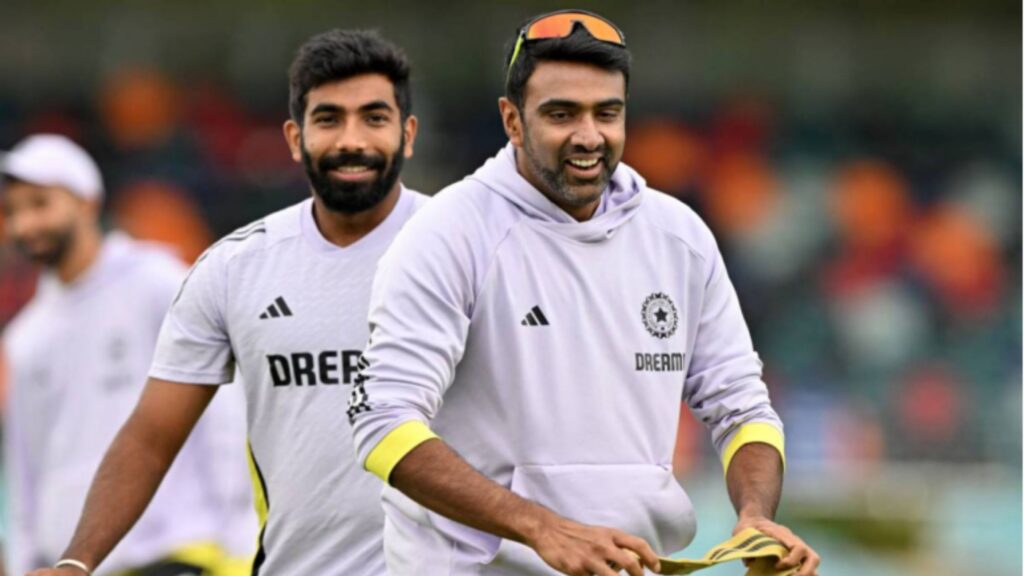
Ravichandran Ashwin, a stalwart of Indian cricket and one of the finest spinners in the game’s history, has been instrumental in the team’s success across formats. With over 700 international wickets, his strategic brilliance, mastery of spin-friendly conditions, and ability to perform under pressure have made him indispensable. However, as India plans for the future, the pressing question arises, how will the team adapt to his eventual absence? The Legacy of Ashwin Ashwin’s impact transcends mere statistics. His skill in deceiving batsmen with innovations like the carrom ball, dominance in spin-friendly conditions, and crucial contributions with the bat have solidified his status as a complete cricketer. His Test performances, particularly at home against top sides like Australia and England, are etched in cricketing history. In white-ball cricket, where spinners often face relentless aggression, Ashwin’s adaptability and consistency have stood out. Additionally, his leadership qualities and mentor-ship of young bowlers have been pivotal in nurturing India’s spin arsenal. The Hunt for Ashwin’s Successor India’s rich domestic circuit and IPL have produced several promising spinners capable of stepping into Ashwin’s role. Yet, matching his influence requires more than talent—it demands temperament, consistency, and a deep understanding of the game. Kuldeep Yadav: A wrist-spinner known for his turn and bounce on even flat tracks, Kuldeep has become a dependable option in limited-overs cricket. His resurgence in form has positioned him as a strong candidate to lead India’s spin attack. Axar Patel: With a flat trajectory and pinpoint accuracy, Axar excels in Tests, particularly in subcontinental conditions. His batting ability adds depth, making him a versatile all-rounder and a potential successor to Ashwin’s all-round role. Yuzvendra Chahal: A seasoned performer in white-ball cricket, Chahal’s flight and variations make him a match-winner. However, he remains untested in the rigors of Test cricket. Ravi Bishnoi: This young leg-spinner’s sharp googlies and quick arm action have already impressed in limited-overs formats. His ability to handle pressure and evolve at the international level will determine his long-term success. Washington Sundar: An off-spinner with a steady economy rate and batting prowess, Sundar has proven his mettle in challenging situations, including the iconic 2020-21 Test series in Australia. Strategies for Transition India’s adaptation to life without Ashwin requires a holistic approach that leverages the strengths of its current spinners while addressing potential challenges: Condition-Based Selections: A horses-for-courses approach, selecting spinners based on conditions and opposition, can maximize effectiveness. Kuldeep and Axar might dominate on turning tracks, while Chahal and Sundar could excel on overseas pitches. Building Partnerships: Creating effective spin duos with complementary styles, such as pairing a wrist-spinner with a finger-spinner, can sustain pressure from both ends. Mentor-ship and Exposure: Young spinners need exposure to high-pressure games and guidance from senior players. Accelerated development through domestic leagues, IPL, and international opportunities will be vital. Strengthening Batting Depth: Identifying spinners with batting potential, like Axar and Sundar, ensures the team’s balance remains intact. Opportunities Amidst Challenges Filling the void left by Ashwin is undoubtedly challenging, but it also presents opportunities for growth: Innovative Bowling Techniques: The new generation brings fresh perspectives and variations, which can unsettle opposition batsmen. Abundant Talent Pool: India’s extensive spin resources, when nurtured effectively, can produce world-class bowlers capable of thriving under pressure. Strategic Leadership: The duo of Rohit Sharma and Rahul Dravid will play a crucial role in ensuring a seamless transition, fostering confidence in emerging spinners, and maintaining team cohesion. Conclusion The absence of Ravichandran Ashwin marks a turning point for Indian cricket. While his shoes are hard to fill, the current crop of spinners, supported by visionary leadership and a clear strategy, has the potential to rise to the challenge. This transitional phase offers an opportunity to discover and refine the next generation of match-winners who will carry forward India’s rich legacy of spin bowling.
India’s ICC Title Drought: Is 2025 the Year to Break It
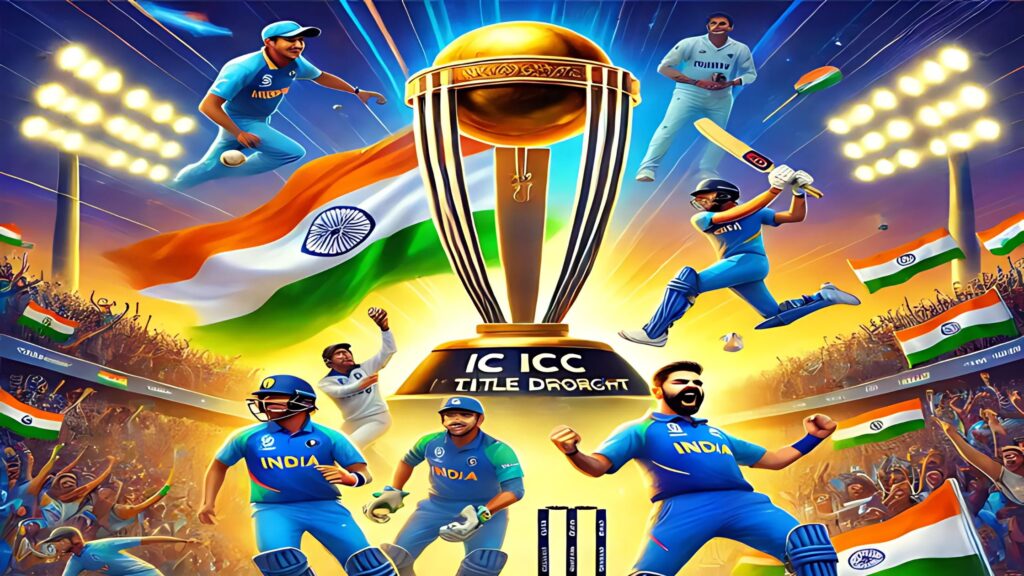
Indian cricket, often regarded as the heartbeat of the nation, has long been associated with producing exceptional talent and delivering thrilling performances on the global stage. However, a significant void persists in their trophy cabinet ,India’s ICC title drought since their 2013 Champions Trophy victory. As 2025 unfolds, the burning question remains, can this be the year India breaks the dry spell? Reflecting on the Journey Since 2013 India last claimed an ICC title under MS Dhoni’s leadership in the 2013 Champions Trophy held in England. Since then, while consistently making it to the knockout stages of ICC tournaments and often being touted as favorites, the team has repeatedly fallen short in critical moments. Heartbreaking losses in finals and semifinals, including the 2014 T20 World Cup (final), 2015 ODI World Cup (semifinal), 2016 T20 World Cup (semifinal), 2017 Champions Trophy (final), and 2019 ODI World Cup (semifinal), have left fans and analysts questioning their ability to thrive under pressure. Key Factors Behind the Drought Inconsistent Knockout Performances: Despite strong showings in group stages, India has often faltered during high-pressure knockout games. The inability to adapt swiftly to challenging situations has been a recurring theme. Dependence on Star Players: Over-reliance on key players like Virat Kohli, Rohit Sharma, and Jasprit Bumrah has often proven costly when these players struggled in crucial matches. Strategic Deficiencies: Questionable team selections, rigid strategies, and an over-dependence on specific playing styles have frequently allowed opponents to gain the upper hand. Mounting Expectations: The pressure of meeting the hopes of over a billion fans has, at times, overwhelmed the team during pivotal moments. Why 2025 Could Be a Turning Point This year’s cricket calendar presents numerous opportunities for India to end their ICC title drought, starting with the Champions Trophy in February-March. Here’s why 2025 might be different: Emerging Talent and Fresh Energy: With senior players nearing the twilight of their careers, a new generation, including stars like Shubman Gill, Yashasvi Jaiswal, and Umran Malik, brings a fresh dynamic and innovative approach. Experienced Leadership: The seasoned pairing of captain Rohit Sharma and coach Rahul Dravid offers a blend of experience and strategic insight. Their focus on preparation and adaptability could prove pivotal. Robust Bowling Attack: Despite Bumrah’s recent injury, India boasts a potent bowling line-up, featuring Mohammad Siraj, Kuldeep Yadav, and the returning Mohammad Shami. This well-rounded attack suits subcontinental conditions. Home-Like Conditions: Playing Champions Trophy matches in the UAE, where conditions are similar to Indian pitches, provides a significant advantage. Familiarity with the environment could be a game-changer. Challenges to Overcome Fitness Concerns: The fitness of key players like Bumrah and Shami will be crucial to maintaining consistent performance throughout the year. Tough Competition: Teams such as England, Australia, and Pakistan have assembled strong squads for 2025. India must deliver top-notch performances to outshine these rivals. Handling Pressure: Breaking the cycle of knockout-stage disappointments will demand not just skill but also mental resilience. A robust support system for players during critical moments will be vital. Beyond the Champions Trophy The Champions Trophy marks only the beginning of India’s quest for glory. Later in the year, the ODI World Cup in South Africa offers another chance to claim ICC silverware. Additionally, the team will face high-profile challenges, including a Test series in England, providing ample opportunities to build momentum. Conclusion As 2025 dawns, the desire to end the ICC title drought burns brighter than ever. The combination of young talent, seasoned leadership, and favorable conditions sets the stage for a trans-formative year in Indian cricket. While the journey ahead is fraught with obstacles, the potential for a triumphant 2025 has never been more compelling. The campaign begins with the Champions Trophy. Will India finally reclaim their place at the summit of world cricket? The answer lies in their ability to seize key moments, convert potential into success, and bring unparalleled joy to their devoted fans. For Indian cricket, the time to shine is now.
The Rise of Women’s Cricket in India: A New Era of Inspiration
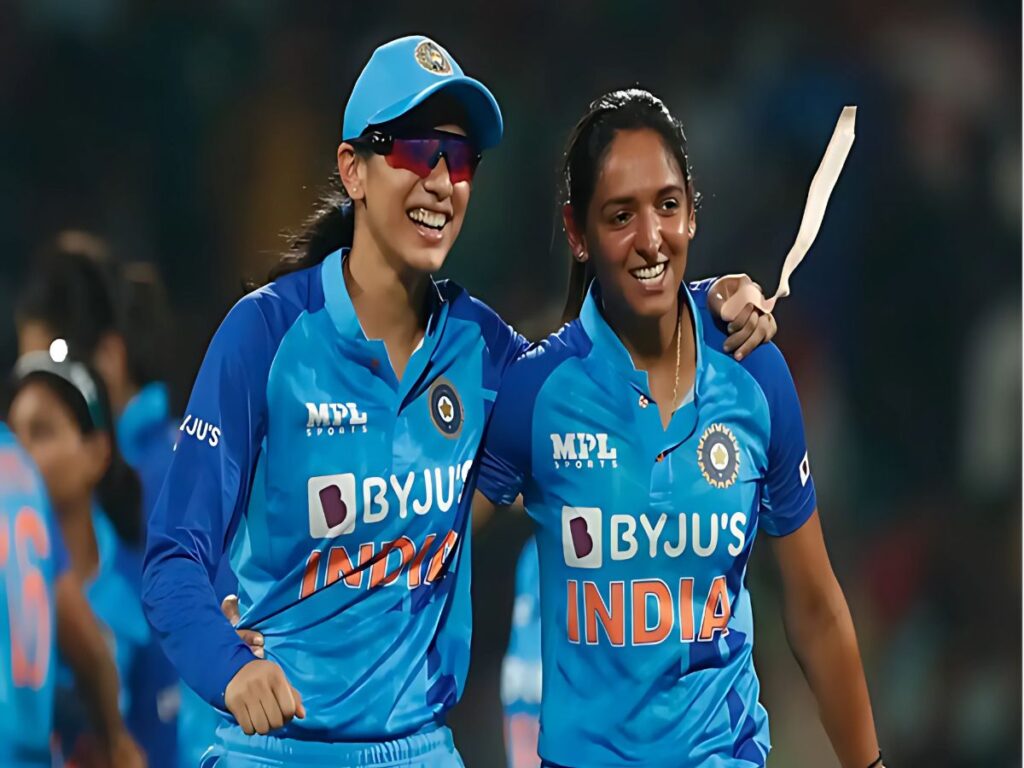
Indian cricket is experiencing a monumental shift, with the extraordinary growth of women’s cricket leading the charge. The Women’s Premier League (WPL) has played a pivotal role in bringing women’s cricket into the limelight, driving increased interest, investment, and fan engagement. With iconic players leading the way and inspiring future generations, women’s cricket in India is no longer just a sport but a movement redefining the cultural and sporting landscape. Women’s Premier League (WPL): Transforming the Game The WPL has emerged as a groundbreaking event in Indian sports, akin to the Indian Premier League’s impact on men’s cricket. Since its debut in 2023, the WPL has provided an unparalleled platform for female cricketers to shine, offering them financial independence and a stage to perform before an audience passionate about cricket. Record-Breaking Viewership: The WPL’s inaugural season drew over 50 million viewers for the opening match, with packed stadiums and lively social media interactions showcasing its massive popularity. Commercial Triumph: The league has become a magnet for sponsor-ships, with broadcasting rights fetching ₹951 crore for five years, signaling a paradigm shift in the perception of women’s sports in India. Talent Recognition: The WPL has spotlighted emerging players from smaller towns and villages, proving that India’s cricketing talent pool is vast and diverse. The league’s inclusion of international players has also elevated the quality of the competition. Leading the Charge: Star Players Inspiring a Nation Indian women cricketers have become icons, captivating millions with their performances and breaking barriers on and off the field. Smriti Mandhana: Renowned for her elegant batting and captaincy, Smriti has become a symbol of consistency and grace in Indian cricket. Her leadership in the WPL has solidified her role as a pioneer. Harmanpreet Kaur: The Indian skipper and a WPL standout, Harmanpreet’s fearless batting and resilience epitomize the modern era of women’s cricket. Shafali Verma: A teenage prodigy, Shafali’s explosive style has redefined aggressive batting. Her dominance at the crease is drawing comparisons to cricket’s legendary hitters. Renuka Singh Thakur: A rising star in the bowling department, Renuka has consistently impressed with her precision and composure under pressure.These players have become household names, inspiring young girls to pursue their dreams and proving that cricket is a sport for everyone. Nurturing the Next Generation The rise of women’s cricket has spurred grassroots enthusiasm, inspiring countless young girls across India. Surge in Participation: Cricket academies have seen a sharp increase in female enrollment, with initiatives by the BCCI and state associations encouraging more girls to take up the sport. Visibility and Role Models: Women cricketers are now visible in mainstream media and advertisements, providing relatable figures for aspiring players. Icons like Jemimah Rodrigues and Deepti Sharma are celebrated as examples of hard work and perseverance. Support Systems: Scholarships and enhanced facilities from corp-orates and NGOs are creating an ecosystem where young talent can thrive. Overcoming Challenges Pay Disparity: Women cricketers still earn significantly less than their male counterparts. Closing this gap is vital for equality and recognition. Limited Domestic Exposure: The domestic circuit for women needs more matches and better infrastructure to ensure a steady talent pipeline. Cultural Barriers: Societal attitudes in some regions still discourage girls from pursuing sports, requiring a long-term cultural shift. Embracing Opportunities Expansion of the WPL: Adding more teams and matches can increase opportunities for players and enhance fan engagement. Global Tournaments: Hosting international events like the Women’s World Cup can elevate the sport’s visibility and popularity. School-Level Initiatives: Encouraging cricket programs in schools will help identify and nurture young talent early. Conclusion The evolution of women’s cricket in India marks more than just a sporting achievement—it represents a cultural revolution that empowers women and breaks societal barriers. The Women’s Premier League has laid a strong foundation, while star players continue to inspire the dreams of young girls nationwide. With sustained investment, inclusive policies, and societal support, Indian women’s cricket is set to scale unprecedented heights by 2030, establishing itself as a powerhouse on the global stage.
Squad Announcement for India’s T20I Series Against England – January 2025
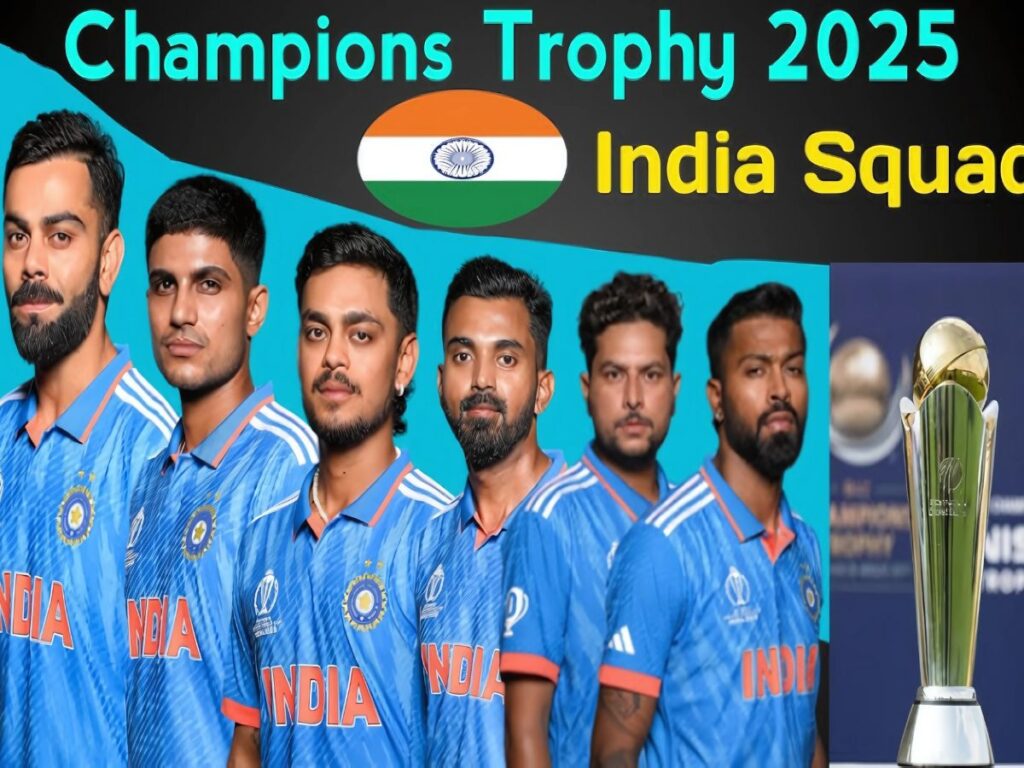
The Board of Control for Cricket in India (BCCI) has unveiled a 16-member squad for the highly anticipated five-match T20 International (T20I) series against England, set to kick off on January 22, 2025. The matches, to be played across multiple venues, will offer both teams an opportunity to fine-tune their preparations for the ICC T20 World Cup later this year. Notable Updates and Changes Jasprit Bumrah Ruled Out:Jasprit Bumrah, India’s ace fast bowler, has been ruled out of the series due to back spasms sustained during the third Test of the Border-Gavaskar Trophy against Australia. His absence is a significant setback for India’s bowling lineup, especially given his proven ability to excel in high-pressure death overs. Mohammad Shami Returns:Stepping in for Bumrah is veteran pacer Mohammad Shami, who returns to the T20I setup after recovering from an ankle injury that had kept him out since November 2023. Shami’s experience and his ability to swing the ball effectively during the power-play will bolster India’s bowling attack. Wicket-keeping Alternatives:Rishabh Pant, a mainstay in India’s T20 lineup, has been rested, reportedly to manage his workload after a hectic cricketing calendar. In his absence, the selectors have opted for Sanju Samson and Dhruv Jurel as the wicket-keeping choices Sanju Samson: brings a wealth of experience and the versatility to either anchor an innings or provide acceleration. Dhruv Jurel:a rising star, has impressed with his performances in domestic cricket and the Indian Premier League (IPL), earning a well-deserved call-up. Squad Composition The selected team balances seasoned campaigners and promising young talent, reflecting the selectors’ focus on building a robust squad for the World Cup. The lineup includes: Batters: Rohit Sharma (Captain), Virat Kohli, Shubman Gill, Suryakumar Yadav All-rounders: Hardik Pandya (Vice-Captain), Ravindra Jadeja, Axar Patel, Washington Sundar Wicketkeepers: Sanju Samson, Dhruv Jurel Bowlers: Mohammad Shami, Arshdeep Singh, Umran Malik, Yuzvendra Chahal, Kuldeep Yadav Additional Players: Tilak Varma, Shivam Mavi Promoting Youth and Talent The inclusion of emerging players such as Tilak Varma, Dhruv Jurel, and Shivam Mavi highlights BCCI’s efforts to cultivate young talent. Their consistent performances in domestic competitions and the IPL have earned them a platform to showcase their skills on the international stage. Upcoming Challenges England’s aggressive and dynamic T20 style will test India’s mettle in this series. Without Bumrah, the onus will be on Mohammad Shami’s expertise and Umran Malik’s raw pace to neutralize England’s power-packed batting order. The series will also provide a critical opportunity to evaluate the middle-order’s stability, which has been a concern in recent outings. Conclusion This T20I series against England is a pivotal step for India as they fine-tune their strategies and finalize their squad for the ICC T20 World Cup. While the absence of key players like Bumrah and Pant poses challenges, the depth and talent in the selected squad inspire confidence. Cricket fans can look forward to an exciting contest as both teams gear up for high-stakes action.
Team and Series Insights: India vs England T20I Series

The much-anticipated five-match T20I series between India and England sets the stage for a high-octane clash between two of the most dynamic teams in modern cricket. Renowned for their aggressive gameplay, strategic acumen, and adaptability under pressure, these sides promise to deliver a gripping contest. For India, the series comes at a critical juncture, serving as a testing ground to finalize their squad for the ICC Champions Trophy amid-st significant injury concerns and workload management challenges. India’s Bowlers vs England’s Power Hitters The spotlight will firmly be on how India’s bowlers tackle England’s fearless batting lineup, which boasts destructive players like Jos Buttler, Liam Livingstone, and Jonny Bairstow. Arshdeep Singh vs Jos Buttler: Arshdeep, with his ability to swing the ball early and execute pinpoint yorkers at the death, faces the challenge of containing Buttler, one of the most explosive T20 openers in the world. Um-ran Malik vs Liam Livingstone: Umran Malik’s raw pace will be put to the test against Livingstone’s aggressive, all-round hitting prowess. This contest could ignite fireworks, particularly as Livingstone thrives on pace and spin alike. Yuzvendra Chahal vs Dawid Malan: Chahal’s experience and sharp variations will be crucial in stifling England’s middle order. His duel with Dawid Malan, known for steady innings and late accelerations, will be pivotal in shaping the middle overs. India’s Batters vs England’s Bowling Attack England’s versatile bowling unit, led by Adil Rashid and Chris Woakes, will look to exploit any vulnerabilities in India’s batting. Shubman Gill vs Adil Rashid: Gill’s elegant stroke play and ability to counter spin will face a stern test against Rashid’s guile and variation. This head-to-head could play a decisive role in determining momentum. Suryakumar Yadav vs Mark Wood: Suryakumar’s inventive batting style will be a fascinating counter to Wood’s sheer pace. If Suryakumar can dominate, it could tilt the balance firmly in India’s favor. Bowling Department Emerging Pacers’ Opportunity: The absence of Bumrah places additional responsibility on Mohammad Shami to lead the attack. Young pacers like Arshdeep Singh and Umran Malik will have the chance to prove their ability to thrive in high-pressure scenarios. Spin Department’s Role: Yuzvendra Chahal and Washington Sundar are set to play crucial roles. Sundar’s all-round capabilities bring depth and balance to the side, while Chahal’s experience adds a reliable edge in the middle overs. Batting Department Middle-Order Adjustments: With Rishabh Pant sidelined, the onus shifts to Sanju Samson and Dhruv Jurel. Samson’s experience in high-stakes situations and Jurel’s youthful exuberance offer contrasting strengths for the team to explore. Young Talents in Focus: Players like Shubman Gill and Suryakumar Yadav are expected to anchor the innings, while emerging stars like Tilak Varma may have an opportunity to shine and stake their claim for future tournaments. Strategies for Workload Management Player Rotation: The Indian team has increasingly adopted rotation policies to give players adequate rest. This approach not only ensures the fitness of senior players but also provides exposure to emerging talents. Focused Rehabilitation Programs: The medical team plays a pivotal role in designing personalized rehabilitation plans, as seen in the recoveries of Bumrah and Shami. Emphasis on Mental Health: The mental strain of continuous cricket is addressed by providing psychological support and fostering a player-centrist environment. This helps players stay motivated and perform consistently. Conclusion The India vs England T20I series transcends the typical bilateral rivalry, serving as a vital preparatory phase for India ahead of major tournaments. From critical match-ups and bench strength assessments to the intricate balancing act of workload management, this series is poised to provide invaluable insights into the team’s readiness.For players like Shami, Samson, and Jurel, it represents a golden opportunity to solidify their positions in the squad. Equally, it challenges the team management to refine strategies and build a resilient, adaptable unit capable of thriving under the rigors of international cricket. Balancing immediate goals with long-term vision will be India’s ultimate test as they aim to maintain their competitive edge in a demanding cricketing landscape.
Jasprit Bumrah’s Injury: A Major Setback for India
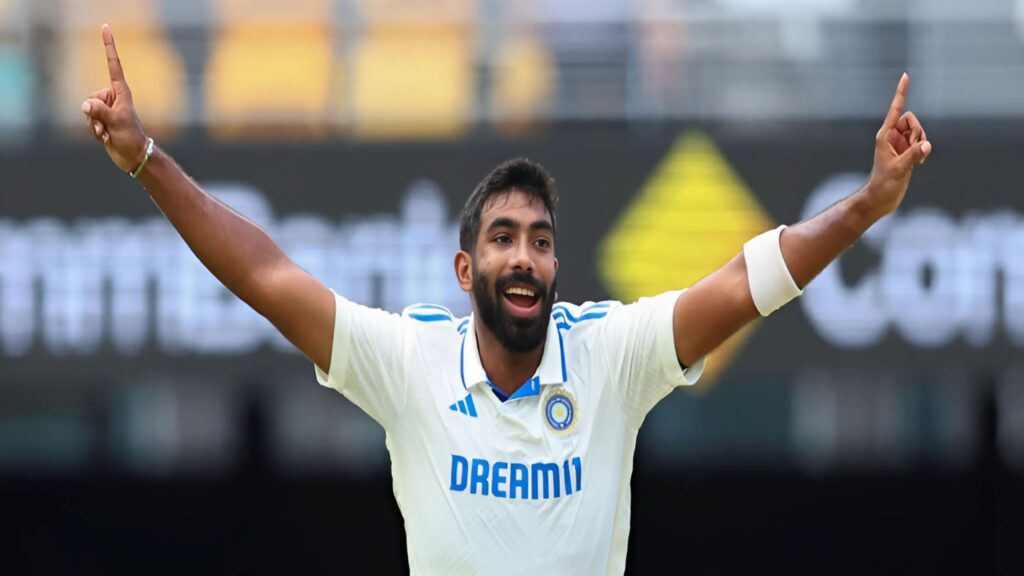
Jasprit Bumrah, widely regarded as one of India’s finest fast bowlers and a cornerstone of their bowling unit across all formats, has been ruled out of the eagerly awaited five-match T20I series against England due to back spasms. The injury was sustained during the recently concluded Test series against Australia, where Bumrah played a key role in pivotal moments. However, as the final Test progressed, he began experiencing discomfort in his lower back, prompting immediate attention from the team’s medical staff.Detailed medical examinations confirmed the diagnosis of back spasms. Consequently, the decision was made to rest him from the T20I series to focus on his recovery and rehabilitation. The team management has prioritized ensuring Bumrah’s fitness for the upcoming ICC Champions Trophy in February, a marquee tournament where his contribution will be critical. Challenges Arising from Bumrah’s Absence Bumrah’s absence is a substantial blow for India, particularly in the T20 format, where his skills are indispensable. Renowned for his ability to deliver in the power-play, middle overs, and at the death, he is the bowler that captains turn to during high-pressure moments. His unique bowling action, mastery of yorkers, deceptive slower deliveries, and sharp bouncers make him one of the most versatile and effective bowlers in world cricket. Mohammad Shami’s Return: A Boost to the Bowling Unit On a positive note, the series against England marks the return of veteran pacer Mohammad Shami, who has recovered fully after being sidelined for over a year due to an ankle injury. Shami’s return comes as a timely boost, as his wealth of experience and ability to lead the bowling attack will be critical in Bumrah’s absence. Shami is renowned for his exceptional seam movement, ability to extract bounce, and precise control, particularly with the new ball. These skills will be pivotal in countering England’s aggressive batters. Beyond his on-field contributions, Shami’s presence also offers an opportunity for him to mentor younger pacers like Arshdeep Singh and Umran Malik, helping them refine their skills and adapt to the demands of international cricket. The Wicket-keeping Dilemma: Pant’s Absence India is also grappling with the absence of Rishabh Pant, the team’s regular wicketkeeper and an integral part of their middle order in white-ball cricket. Pant’s fearless batting style and ability to play match-defining knocks have been central to India’s T20I successes.To address this gap, the selectors have named Sanju Samson and Dhruv Jurel as wicket-keeping options. Samson, with his vast experience in domestic cricket and the IPL, offers reliability and aggression in the batting order. His ability to adapt to different situations makes him a strong contender for the role. Dhruv Jurel, on the other hand, represents a promising young talent in Indian cricket. Known for his sharp glove-work and ability to handle pressure, Jurel has showcased his potential through consistent performances in domestic circuits and the IPL. The Strategic Importance of the England Series The five-match T20I series against England is more than just a bilateral contest, it serves as a crucial preparation phase for the ICC Champions Trophy. With key players like Bumrah and Pant missing, the series provides India with an opportunity to test their bench strength, experiment with player combinations, and assess the readiness of backup options.For Mohammad Shami, the series is a chance to regain his rhythm and match fitness after a long injury layoff. For emerging players like Dhruv Jurel, it is a platform to showcase their talent and adaptability against a top-tier side like England. The series will also test India’s ability to adapt and perform under challenging conditions, particularly against an opponent that has consistently excelled in the shorter formats of the game. Looking Ahead While the absence of Jasprit Bumrah and Rishabh Pant presents challenges, it also creates opportunities for other players to step up and make a mark. The T20I series against England is not just about securing a series win but also about building a well-rounded, resilient team capable of competing at the highest level.The performances of returning veterans like Mohammad Shami and emerging talents such as Dhruv Jurel will be under close scrutiny. This series will test not only individual capabilities but also the overall depth, strategy, and preparedness of the Indian team as they gear up for critical challenges ahead, including the ICC Champions Trophy.
The Future of Test Cricket: India’s Position and Prospects
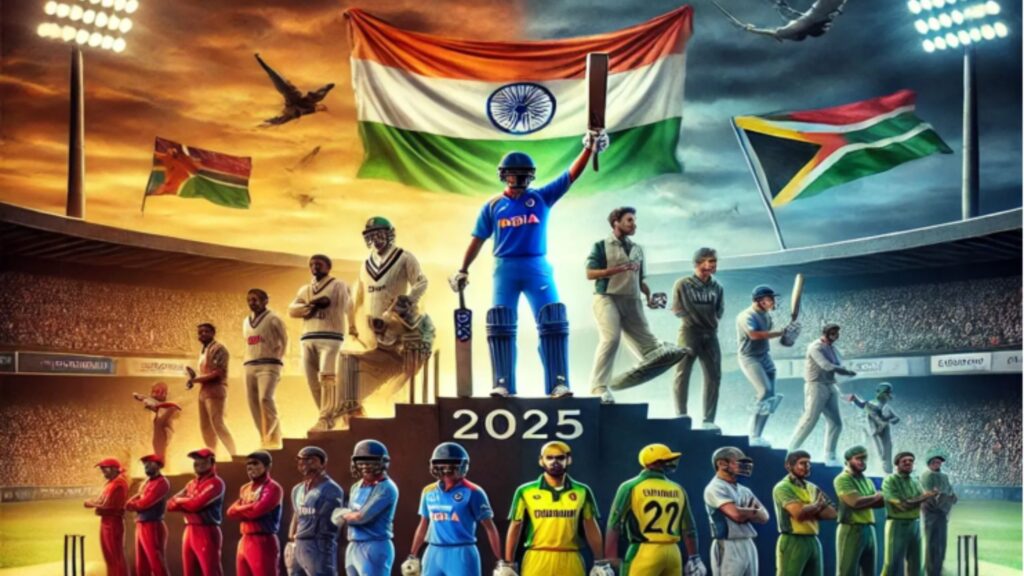
Test cricket, long revered as the pinnacle of the sport, faces significant challenges in 2025. The rise of franchise T20 leagues and a waning interest in the longer format among certain audiences have sparked debates on how to preserve its relevance and sanctity. At the center of these discussions is the two-tier system—a polarizing proposal that has evoked varied responses across the cricketing world. As a dominant force in international cricket, India holds a unique position to influence the direction Test cricket takes. Decoding the Two-Tier Proposal The proposed two-tier Test cricket system seeks to categorize Test-playing nations into two groups based on performance. The top tier would feature the strongest teams, while the second tier would consist of emerging or struggling sides. Promotions and re-legations between tiers would be determined by performance, aiming to boost competitiveness and drive improvement among lower-ranked teams.While this structure aspires to enhance the quality of Test cricket, it has drawn significant criticism. Opponents argue that it could marginalize second-tier teams, curbing their financial and competitive opportunities. Countries like West Indies, Zimbabwe, and Afghanistan might struggle to secure sponsors, attract fans, and retain talent, creating a downward spiral. Additionally, the two-tier system risks widening the gap between elite teams and others, threatening the inclusive of the sport. Implications for Indian Cricket India’s dominance—both financially and competitively—renders it relatively immune to relegation threats. However, the two-tier system could still have substantial ramifications for Indian cricket: Erosion of Traditional Rivalries: Iconic rivalries, such as those against Pakistan and Sri Lanka, could diminish if these teams are relegated. The loss of these marquee clashes might reduce fan engagement and erode the historical essence of Test cricket. Scheduling Pressures: India’s already crowded cricket calendar, dominated by the Indian Premier League (IPL) and white-ball fixtures, could face further strain under the two-tier structure. Achieving a balance between commercial priorities and a demanding Test schedule would require strategic foresight. Global Perception and Influence: As a key stakeholder in cricket’s governance, India’s stance on the two-tier system will shape global perspectives on the sport. Endorsing a perceived inequitable structure could harm India’s image and its relationships with other cricketing nations. Nurturing Emerging Talent: Limited opportunities to compete against a diverse range of international teams could impede the development of India’s younger players, who gain invaluable experience through exposure to varied playing conditions and opposition. India’s Role in Safeguarding Test Cricket India possesses the resources and responsibility to take a leadership role in protecting the future of Test cricket. Promoting Inclusive: India can advocate for a model that ensures inclusive and fairness among all Test-playing nations. Instead of endorsing a rigid two-tier structure, India could support a global league format that provides equal opportunities for all teams. Investing in Global Cricket Development: As the financial epicenter of cricket, India can extend support to weaker cricketing nations by funding development programs, hosting bilateral series, and facilitating infrastructure growth. This would help sustain the competitiveness of Test cricket worldwide. Reinvigorating Fan Interest: Leveraging its innovative marketing strategies, India can make Test cricket more appealing to modern audiences. Initiatives like day-night Tests, engaging storytelling around historic rivalries, and enhanced broadcast experiences can revitalize interest in the format. Striking a Balance Between Commerce and Tradition: The IPL’s success highlights the importance of commercial viability in cricket. India must harmonize its financial interests with a commitment to preserving the essence of Test cricket, ensuring the coexistence of all formats. Strengthening Domestic Foundations: India’s robust domestic structure, led by the Ranji Trophy, has been instrumental in its Test success. Continued investment in domestic cricket and policies that emphasize the value of Test cricket to emerging players will be crucial for maintaining India’s dominance in the format. Navigating Tradition and Progress The future of Test cricket hinges on collaborative and forward-thinking solutions. As a cricketing superpower, India holds a pivotal role in ensuring the format’s survival and evolution. By championing an inclusive, sustainable vision for Test cricket, India can help preserve its rich traditions while embracing the needs of a changing world.
